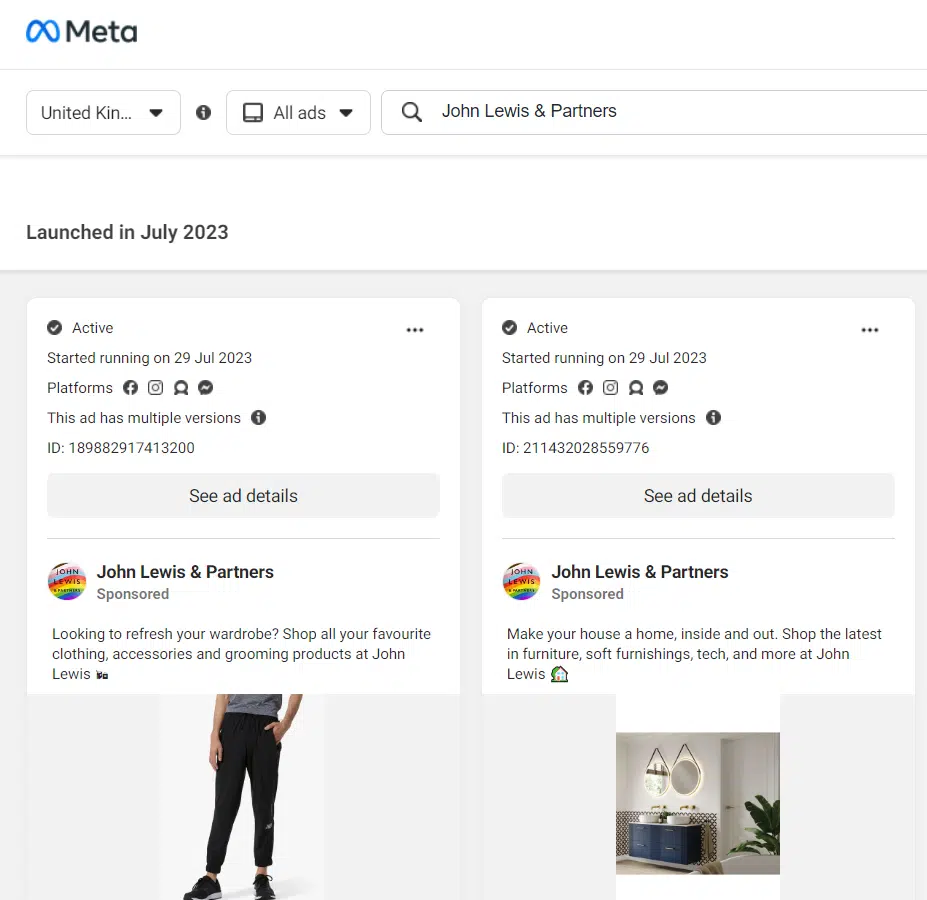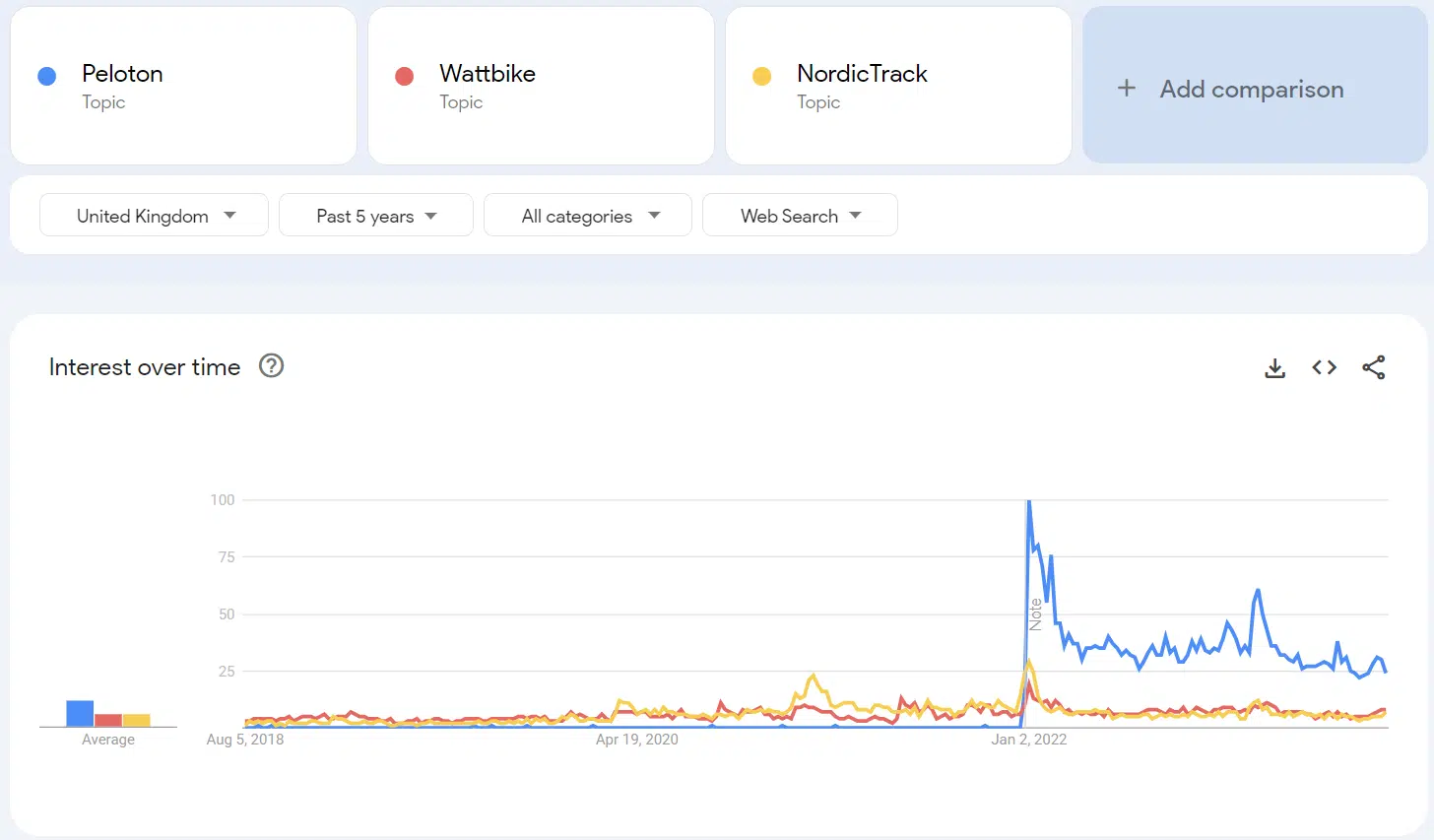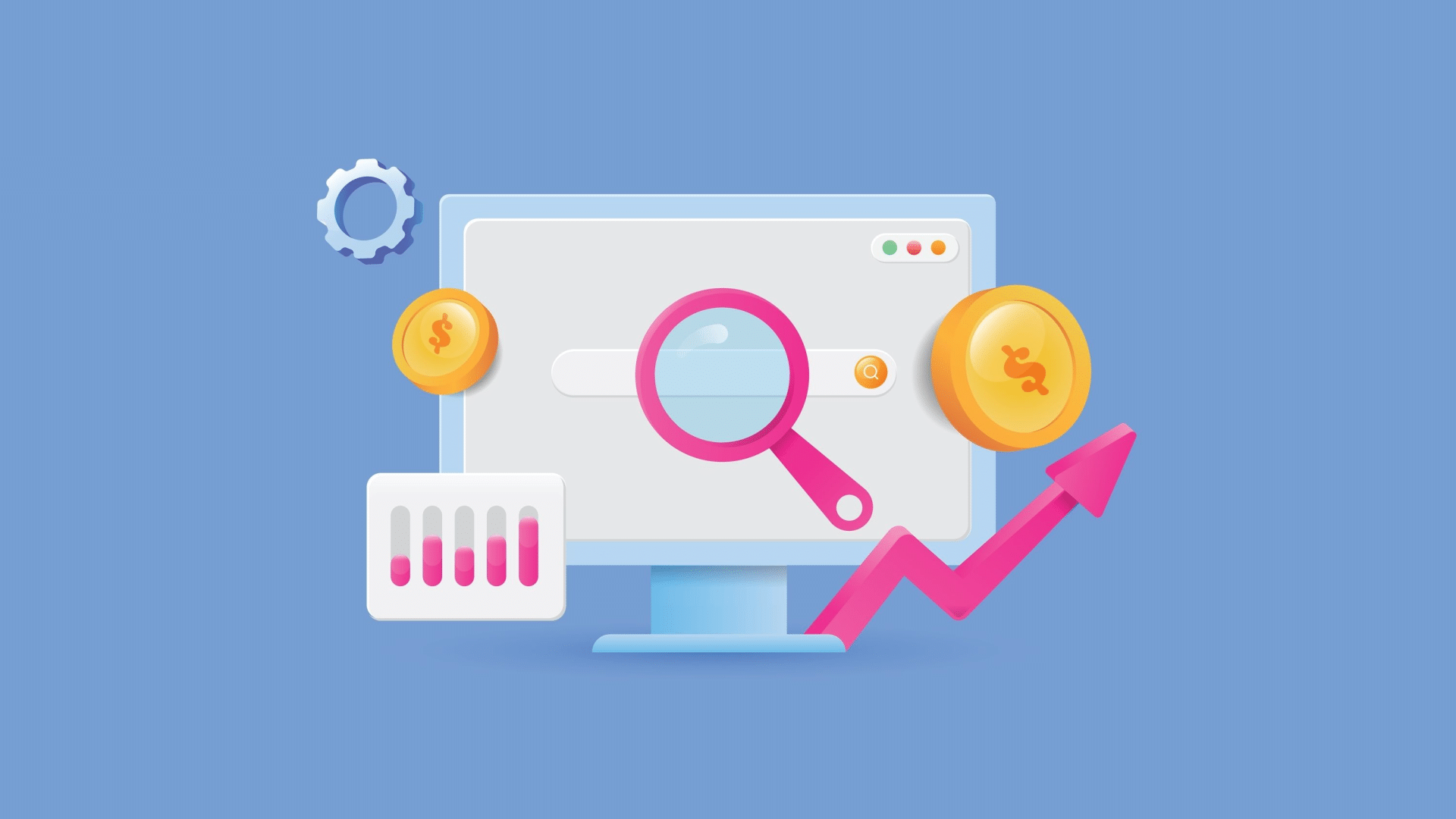Plenty of tools promise to offer excellent PPC data and insights. However, they usually come at a cost. But if you know where to look, you can gather a wealth of data and insights without spending a dime.
In this article, I’ll share a list of free tools I use to manage client accounts and optimize campaigns across paid channels.
Analyzing the competition is crucial when planning and managing your paid media ads. You also need to keep up with what is happening in the market.
The tools below offer free insight into just this.
1. Google Ads Transparency Center
Google Ads Transparency Center is a relatively new tool that enables users to see what ads any verified advertiser is running across Google networks.
The tool was released as a privacy measure to create a “safe and open internet.” But for advertisers, it also works as a great way to see your competitors’ ads.
Ads Transparency allows you to search for any advertiser, specify a date range, location and ad format and see what ads are or have been running.
You can use this feature to check the messaging, visuals and offers your competitors are using to better understand how you can make your own ads more enticing.
If you see a change in performance in your ads, it works as an additional place to check to see if a competitor has adjusted their offering or started/stopped ads.
2. Facebook Ads Library
Similar to the Ads Transparency Center is the Facebook Ad Library. The Ads Library allows you to search all ads currently running across Meta platforms from any advertiser.
To use it, you just need to search for a specific advertiser or keyword, select the ad category (employment, political and a few others fall into special categories), and Facebook will do the rest.

You can view:
- The date the ad was launched.
- The platforms the ad is running on.
- Whether it is a static or dynamic ad.
- The messaging and creative.
- Click through to the landing page in use.

By combining the tools, you can build a picture of the messaging and funnel your competitors are adopting.
LinkedIn also has a similar feature if you navigate to a business profile, view posts and filter down to ads.
3. Google Trends
Google Trends allows you to track the popularity of terms, topics or companies over a given period and location.
It also lets you compare the trend data, making it a great tool for tracking brand growth over time.
You can use Google Trends to:
- Plot how your brand name trends vs. your competitors.
- Add up to four keywords to compare.
- Export this data to give you an idea of brand share over time.
Filtering the results by the type of search used (i.e., Google Shopping or YouTube) gives insights into the different buying intents and trends. This can help you shape your channel strategy.

4. Glimpse
Glimpse is a great little tool to help you better understand trends and potential within a given topic or keyword. It works as an extension to Google Trends to provide additional insights and data.
You can still use the traditional functions within Google Trends, like the location and time period settings.

Within the free package, you can access 10 free lookups per month on any topic or keyword. These credits allow you to:
- Track trends and trajectory.
- See what variations of the keywords people are also searching for.
- Break down what people are searching across six channels (Google, Amazon, YouTube, TikTok, Pinterest and Etsy) and sort this by volume, growth or CPC.
- See the social media channels where the keyword is used, and understand the level of usage
- See a topic map to give you new ideas for keyword clusters

If you upgrade to the premium version, you can access additional features such as forecasting data.
The free version, however, gives loads of insight and is a great place to supplement your existing trend data.
Other tools
In addition to these tools, several other premium platforms offer basic free access.
While these tools alone do not give you all the answers, you can build a comprehensive view when used with other tools.
5. SpyFu
In the free version, you can view:
- The number of keywords a domain is ranking for (both organic and paid).
- The top competitors.
- The estimated monthly clicks and ad spend.
To gauge how far out the estimates can be a good approach, put your domain through the tool and compare its figures to your actual platform data.
6. Semrush
Semrush has valuable data showcasing keywords used, search volume, CPCs, traffic, etc. You can use the tool to conduct a keyword gap analysis against your competitors.
The downside to the free version is that it only allows 10 free requests per day, so you have to be mindful of where you are clicking and plan the data you want to access ahead of time.
Similar to SpyFu, it’s always good to have comparison data. Take data from more than one platform to give a more rounded view.
Get the daily newsletter search marketers rely on.
Keyword research
Keyword research is the building block of search campaigns, but can also influence your strategy on Youtube, Shopping and Pinterest, among other channels.
While automation is changing how Google campaigns are created, conducting effective research is still essential to your campaign builds.
7. Google Keyword Planner
Google Keyword Planner is a more widely used keyword research tool. All you need to get started is an active Google Ads account. (Though you may be required to add billing details upon setting up your account).
The tool allows you to start with either base keywords or a website URL. Google then uses this information and comes back with related keywords.
Scanning through and selecting the keywords relevant to your business and what you want to advertise on is a manual process.
The tool provides both historical search volume metrics as well as forecasts.
While these give an indication, always take them with a grain of salt.
Remember that many other factors will determine when your ad will show and what you will have to pay, such as competition, ad relevance and bid strategy.

One of the additional great benefits of the tool is when you use the URL feature, which gives you insight into how Google reads your page.
If it is kicking back a lot of irrelevant terms, you can use this information to customize your page content to make it more relevant.
8. Answer the Public
Answer the Public is an alternative keyword research tool that offers a free version of up to three searches per day. As the name suggests, the tool focuses on question-based searches.
In addition to questions, it also provides prepositions and comparisons.
The downside to the free version is that it does not show all of the search volume data. Still, you can export the keywords and get search volumes from another tool, such as Google Keyword Planner.

9. Ahrefs
Ahrefs is typically used as an SEO tool. However, it can be a good place to start for keyword idea generation.
Without a subscription, you can’t see all data for all keywords. But it gives the first 100 keywords for free, along with their search volume and difficulty ranking (from an organic perspective).

In addition to using it for research in Google search, it also provides data for Bing, YouTube and Amazon.
Design
When it comes to visual ads, your creative is everything. But creative traditionally can be expensive.
So if you are on a budget, there are free tools you can use that offer great design capabilities. Even better, they are intuitive and easy to use.
10. Canva
Canva is an extremely user-friendly design platform. You can use it for free to create visual assets.
If you are new to design, they have pre-built templates you can use and adopt, or you can start with a blank template.
You can also access free stock imagery, videos and icons to use as part of your creative.

The elemental nature of the tool makes it easy to use and quick to grasp.
Website analysis
You need to understand how users behave when they visit your site if you want to improve your overall performance, along with your PPC landing pages.
While there are obvious tools like Google Analytics, consider these little-known tools that provide more enhanced data, such as heat mapping, for free.
11. Microsoft Clarity
Microsoft Clarity is a free behavior analytics tool that offers heat mapping and session recordings.
You may have heard of or used HotJar, and while HotJar does have a free version, the scope of a free account is quite limited.
With Clarity, you get access to the full platform for free. There is no paid version.

It allows you to narrow into specific pages, time periods and devices (amongst other filters) to really understand how users are behaving on site.
You can get insight into where people are clicking, receiving errors and quickly clicking back.
If you connect your Google Analytics accounts, you will also see session data and be able to import your goals to analyze journeys in a more granular way.
You can use this information to guide your landing page optimizations and identify issues in your conversion journey.
They have also released a new browser extension so that you can see data live on your site when you visit.
While this is not an exhaustive list of all of the free tools for paid media, these are the ones I turn to most often to gain actionable PPC insights.
If there’s something here you haven’t used before, I would highly recommend testing them out.
Opinions expressed in this article are those of the guest author and not necessarily Search Engine Land. Staff authors are listed here.








